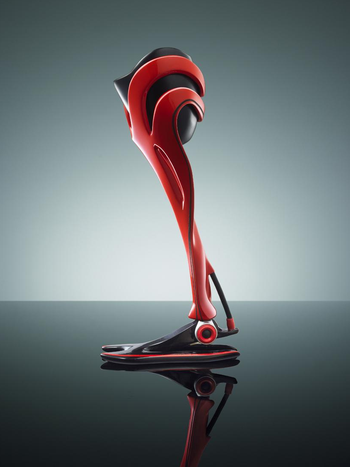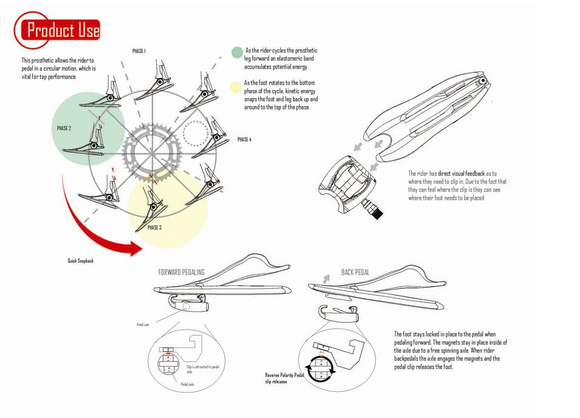
If you think Oscar Pistorius's Cheetah legs are cool, wait until you get a load of the slick new cycling prostheses that may soon be available for lower leg amputees. Earlier this September, the 2011 James Dyson Award for the United States was given to a new prosthetic called the . The prosthetic鈥攚hich was designed by a student at the Art Center College of Design in Pasedena, California鈥攚ill now compete for the international James Dyson Award.
Industrial designer created the prosthetic to make biking easier for people who have had a leg amputated below the knee. This is the largest group of amputees in the country, representing roughly 47 percent of the estimated 1.8 million United States amputees.听
Currently, many paracyclists cut the cleats off their road bike shoes and attach them to prosthetics. While this solution allows them to bike, it's awkward and inefficient in
1. The prosthetic flexes causing cyclists lose power on their downward stroke.
2. To unclip a rider needs to pivot his/her foot to the side. This is very hard for someone with a fixed prosthetic.
3. Most prosthetics don't rotate or flex at the ankle, creating a loss of efficiency because the foot can't generate power all the way through a cycle.
https://youtube.com/watch?v=wFupiGSeVqs
To address these concerns, Astle built a lightweight prosthetic made with a firm carbon nanotube so that force is not lost on the downward movement on the pedal, created a backward release so that it is easier for a cyclist to unclip, and added an articulating ankle fitted with elastic bands so that force is applied and released throughout the pedaling cycle.

On top of all that, he designed the prosthetic to convey a sense of strength by shaping it like the primary muscles and tendons in the lower leg.
For more on how the leg works, check out
Via:
–Joe Spring
听